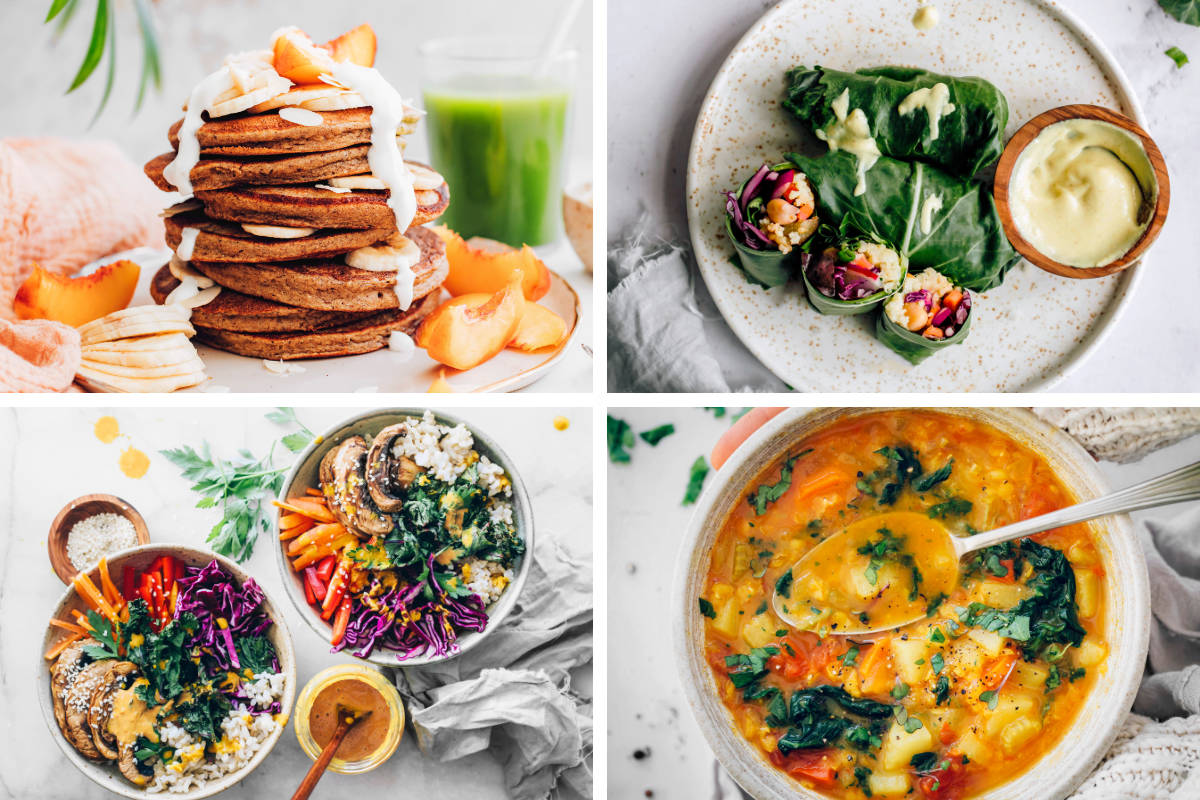Imagine a world of vibrant flavors and satisfying textures, completely free from the constraints of common allergens. This cookbook unlocks that world, revealing 25 inventive recipes that prove delicious, allergen-free cooking isn’t just possible—it’s surprisingly delightful. Forget bland substitutes and restrictive diets; prepare to tantalize your taste buds with dishes bursting with unexpected depth and complexity, all while maintaining complete control over your ingredients.
From savory main courses that will impress even the most discerning palates to decadent desserts that defy expectations, this collection offers a diverse range of culinary experiences. We’ll guide you through sourcing high-quality allergen-free ingredients, mastering essential cooking techniques, and adapting your favorite recipes to fit your needs. Get ready to embark on a culinary adventure where flavor reigns supreme, proving that allergen-free doesn’t mean flavor-free.
Ingredient Sourcing & Substitutions
Creating delicious and safe allergen-free meals requires careful attention to ingredient sourcing and substitutions. Understanding where to find reliable products and how to effectively replace common allergens is crucial for success in allergen-free cooking. This section provides guidance on navigating the world of allergen-free ingredients, helping you confidently create tasty and safe dishes.
Sourcing allergen-free ingredients involves a multi-faceted approach, encompassing careful label reading, exploring specialized stores, and understanding potential cross-contamination risks. Many mainstream supermarkets now stock a growing range of allergen-free products, but dedicated health food stores and online retailers often offer a wider selection and more specialized options. Directly contacting manufacturers can also be helpful in verifying production processes and minimizing cross-contamination concerns.
Reliable Brands and Allergen Substitutions
Several reputable brands specialize in allergen-free products, ensuring quality and consistency. These brands often undergo rigorous testing to minimize cross-contamination. When substituting common allergens, it’s essential to consider not only the nutritional aspects but also the potential impact on texture and flavor. Sometimes, a direct swap might not be ideal, requiring a combination of ingredients to achieve the desired result.
- Dairy: Many dairy-free alternatives exist, each with its unique properties. Coconut milk provides a creamy texture and subtly sweet flavor, suitable for curries and desserts. Soy milk offers a more neutral taste and works well in beverages and baking. Almond milk, while slightly nutty, is versatile and can be used in various recipes. Note that coconut milk tends to be richer and thicker than cow’s milk, while soy milk might have a slightly beany taste.
- Gluten: Gluten-free flours offer a wide range of options for baking and cooking. Rice flour provides a light and delicate texture, ideal for cakes and pancakes. Almond flour lends a slightly nutty flavor and works well in cookies and muffins. Oat flour (ensure certified gluten-free) is a good option for adding body and moisture to baked goods. However, gluten-free baking often requires adjustments to recipes, as gluten-free flours have different properties than wheat flour.
- Nuts: Sunflower seeds, pumpkin seeds, and tahini (sesame seed paste) can serve as substitutes for nuts in various applications. Sunflower seeds provide a slightly sweet and crunchy texture, ideal for salads and snacks. Pumpkin seeds offer a milder, more earthy flavor. Tahini, with its rich, nutty flavor, works well in dips, sauces, and dressings. Remember that these substitutes might not replicate the exact flavor or texture of nuts, requiring recipe adjustments.
- Eggs: Flax eggs (ground flaxseed mixed with water) or chia eggs (chia seeds mixed with water) are popular egg replacements in vegan and allergy-friendly baking. Applesauce can also add moisture and binding properties to baked goods, although it may alter the texture slightly. These alternatives often require adjusting liquid ratios in recipes. Flax and chia eggs provide a slightly nutty flavor, while applesauce adds sweetness and moisture.
- Soy: Individuals with soy allergies need to carefully avoid soy products. Alternatives depend on the application. For example, in Asian cooking, chickpea flour (besan) can be used to create a similar texture to tofu in certain dishes. In baking, other plant-based milks or flours might need to be substituted. The flavor and texture differences will vary greatly depending on the specific substitution.
Common Allergens and Their Substitutes
Understanding the common allergens and their suitable substitutes is vital for creating safe and delicious allergen-free meals. The following table summarizes five common allergens and three potential substitutes for each, highlighting key differences in flavor and texture.
| Allergen | Substitute 1 | Substitute 2 | Substitute 3 |
|---|---|---|---|
| Dairy | Coconut milk (rich, sweet) | Soy milk (neutral) | Almond milk (slightly nutty) |
| Gluten | Rice flour (light, delicate) | Almond flour (nutty) | Oat flour (certified gluten-free, adds body) |
| Nuts | Sunflower seeds (crunchy, slightly sweet) | Pumpkin seeds (mild, earthy) | Tahini (nutty, rich) |
| Eggs | Flax egg (nutty) | Chia egg (nutty) | Applesauce (sweet, moist) |
| Soy | Chickpea flour (in some applications) | Other plant-based milks | Other plant-based flours |
Label Reading and Cross-Contamination
Reading food labels meticulously is paramount in preventing accidental allergen exposure. Always check ingredient lists for potential allergens and look for statements indicating potential cross-contamination during processing or packaging. Manufacturers often use clear labeling to highlight the presence of major allergens. Look for certifications like “gluten-free” or “nut-free” from reputable organizations. When purchasing from smaller producers or farmers’ markets, inquire directly about their processing practices to assess the risk of cross-contamination.
Always prioritize thorough label reading and inquire about potential cross-contamination risks.
Step-by-Step Recipe Creation & Presentation

This section details the creation of one specific allergen-free recipe from a hypothetical cookbook, focusing on a vibrant and flavorful gluten-free pasta dish. We will walk through each step of the process, from ingredient preparation to the final plating, emphasizing techniques to enhance both taste and visual appeal. The recipe is designed to be easily adaptable to individual preferences and dietary needs.
Gluten-Free Lemon-Herb Pasta with Roasted Vegetables
This recipe provides a delicious and visually appealing gluten-free pasta dish, perfect for showcasing the versatility of allergen-free cooking. The vibrant colors of the roasted vegetables contrast beautifully with the bright yellow pasta, creating a feast for the eyes as well as the palate.
| Step | Description |
|---|---|
| 1 | Preheat your oven to 400°F (200°C). Toss 1 cup of broccoli florets, 1/2 cup sliced bell peppers (red and yellow for vibrant color), and 1/2 cup cherry tomatoes with 2 tablespoons of olive oil, salt, and pepper. Spread on a baking sheet and roast for 20-25 minutes, until tender and slightly caramelized. The vegetables should be nicely browned at the edges, showcasing a depth of flavor and texture. |
| 2 | While the vegetables roast, cook 8 ounces of gluten-free pasta according to package directions. The pasta should be cooked al dente, retaining a slight firmness to the bite. Reserve about 1/2 cup of the pasta cooking water before draining. |
| 3 | In a large bowl, whisk together 1/4 cup of olive oil, 2 tablespoons of lemon juice, 1 tablespoon of chopped fresh parsley, 1 tablespoon of chopped fresh basil, 1 clove of minced garlic, salt, and pepper. The vibrant green herbs add a fresh, aromatic layer to the creamy lemon dressing. |
| 4 | Add the cooked pasta and roasted vegetables to the bowl with the lemon-herb dressing. Toss gently to coat everything evenly. The pasta should be well-coated with the dressing, ensuring each strand is infused with flavor. Add a splash of the reserved pasta water if needed to create a creamy consistency. |
| 5 | For plating, divide the pasta among four plates. Arrange the roasted vegetables artfully on top of the pasta, creating visual interest. Garnish with extra fresh parsley and a sprinkle of grated Parmesan cheese (ensure it is allergen-free if needed). A final drizzle of olive oil adds richness and shine, enhancing the overall visual appeal. The bright colors of the vegetables should pop against the yellow pasta, creating a visually stunning dish. |
Visual Presentation of the Finished Dish
The finished dish should be a vibrant and appealing spectacle. The bright yellow of the gluten-free pasta serves as a beautiful backdrop for the colorful roasted vegetables. The broccoli florets should be scattered artfully, contrasting with the smooth, glossy surfaces of the bell peppers and the juicy burst of the cherry tomatoes. The fresh herbs, sprinkled generously, add pops of green, enhancing the overall visual appeal. A final drizzle of olive oil creates a sheen, adding a touch of elegance. The grated Parmesan cheese (if used), provides a textural contrast and adds further visual depth. The overall effect is a balanced and harmonious composition of color and texture, making the dish as visually appealing as it is delicious.
Unleash your inner chef and discover the joy of creating delicious and allergy-friendly meals with this comprehensive guide. These 25 recipes are more than just meals; they’re a testament to the power of creativity and the endless possibilities of allergen-free cooking. With careful ingredient selection, clever substitutions, and a dash of culinary ingenuity, you can confidently craft meals that are both safe and spectacular. So, gather your ingredients, embrace the adventure, and prepare to be amazed by the surprisingly tasty results.
FAQ Corner
Can I use these recipes if I have multiple allergies?
Yes, but always carefully check the ingredients list of each recipe to ensure it’s suitable for your specific allergies. Contact a doctor or registered dietitian if you have concerns.
How long do these recipes take to prepare?
Preparation times vary depending on the recipe. The cookbook includes estimated preparation and cooking times for each dish.
Where can I find allergen-free ingredients?
Many supermarkets now carry dedicated allergen-free sections. You can also find specialty brands online or at health food stores.
Are these recipes suitable for children?
Yes, but always supervise children in the kitchen and adapt portion sizes as needed.
Can I freeze these recipes?
Many of the recipes can be frozen for later use. The cookbook provides guidance on freezing specific dishes.


